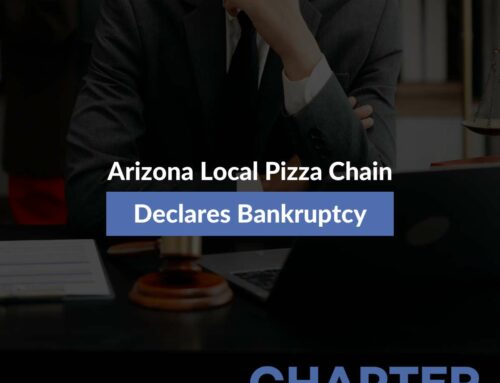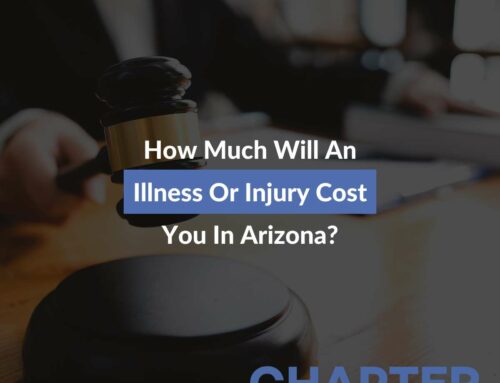Understanding How Medical Bills Contribute To Bankruptcy Filings
Medical costs can escalate quickly and turn a single emergency room visit into months or even years of financial stress. For many people, this strain becomes overwhelming enough to file for bankruptcy. That’s not surprising, since many studies have found that medical issues—ranging from high bills to income loss from illness—play a major role in a significant portion of bankruptcy filings across the country.
This reality shows how financial stability can easily change, even for those with steady income or trusted insurance. That’s why speaking with a bankruptcy attorney can become an essential tool to clarify your financial options. But before doing that, we recommend reading this guide to understand why medical bills are so common when filing for bankruptcy.

What The Research Really Says About Medical Debt & Bankruptcy
A landmark study published in the American Journal of Public Health found that among a sample of bankruptcy filers from 2013-2016, roughly 66.5% reported that medical issues (either high bills or lost income due to illness) contributed to their bankruptcy.
But that’s not all; more recent data further underscore the scale of the issue:
- A 2021 analysis from the Consumer Financial Protection Bureau (CFPB) estimated that as of June 2021 there were about $88 billion in medical debt collection tradelines appearing in credit-reports.
- According to a 2024 brief by the Peterson‑Kaiser Health System Tracker, about 15% of U.S. households owed unpaid medical bills as of December 2021.
- A 2022 study published in JAMA Network Open noted that medical indebtedness is “common, even among the insured,” and appears linked with worsening social determinants of health.
These findings tell a different story than simply stating that “medical debt causes bankruptcy;” they show medical issues often act as a cascading trigger: Large bills + lost wages → financial distress → bankruptcy. They also highlight that even people with health insurance can be vulnerable.
If you are facing overwhelming medical debt, it’s completely normal to consider bankruptcy, and that shouldn’t scare you. You can always talk to a trusted bankruptcy lawyer to understand your options and find the best course of action for your finances.
Why Medical Debt Creates A Financial Crisis
Medical debt can spiral into a financial crisis faster than expected. A single emergency, surgery, or unexpected diagnosis can change everything. Even routine medical care can become difficult to manage once bills begin accumulating.
High healthcare costs are usually the main factor in this crisis. Emergency room visits, specialist appointments, diagnostic tests, and follow-up care can add up quickly, especially when treatment stretches over several months. Even if you have insurance, you can face significant out-of-pocket expenses, including deductibles, co-pays, and uncovered services.
Insurance gaps play a major role, with many plans excluding certain treatments, limiting coverage, or imposing high deductibles that must be met before benefits begin. Others may deny claims entirely, leaving patients responsible for the full bill.
Another factor that can affect this financial crisis is income loss. Serious medical conditions can reduce the ability to work or force extended time away from a job. When regular income drops at the same time that medical expenses rise, the strain becomes unsustainable.
As bills continue to arrive, interest grows, and collections begin, anyone can easily find themselves unable to keep up. This combination of rising expenses and reduced income explains why medical debt is a leading factor in personal bankruptcies.
Medical Debt Challenges For Arizona Residents
Medical debt affects many Arizona households, often becoming unmanageable due to rising healthcare costs, insurance limitations, and unexpected emergencies. Even with coverage, many residents face high out-of-pocket expenses that strain their monthly budgets. These challenges are especially common in rural areas, where access to affordable care is more limited.
Here’s a list of some of the challenges Arizona residents face with medical debts:
- Rising healthcare costs, including hospital stays, ER visits, and specialized treatments.
- High deductibles and co-pays, even for individuals with insurance.
- Out-of-network charges, common in rural counties with fewer in-network providers.
- Surprise medical bills resulting from emergency care or complex procedures.
- Insurance delays or billing errors that leave patients temporarily responsible for large balances.
Limited coverage options through marketplace plans or employer-based insurance. - Seasonal emergencies, such as heat-related illnesses, which increase unplanned medical visits.
- Multiple medical providers involved in one case, generating separate invoices that are difficult to manage.
When Bankruptcy Becomes a Practical Option
Bankruptcy can be an excellent choice if medical debt reaches a point where managing it is no longer realistic. For many people, the turning point comes after months of struggling to keep up with minimum payments, juggling multiple bills, or relying on credit cards to cover essential expenses.
A common sign that bankruptcy may be appropriate is when medical bills consistently exceed available income. This often happens after a major illness or emergency when treatment costs continue to rise while work hours decrease or income drops. If household necessities such as rent, food, and utilities begin competing with medical payments, it may indicate that the debt burden has grown unmanageable.
Another indication is the progression of creditor actions. Once medical providers or collection agencies begin calling frequently, sending notices, or threatening lawsuits, the situation becomes more urgent. Wage garnishment or bank levies can follow if the debt remains unpaid, creating a cycle that becomes increasingly difficult to break without legal intervention.
In the end, the decision to file often appears when debt impacts daily life, causing stress and affecting financial stability. At that point, exploring bankruptcy as an option can offer clarity, protection, and a chance to rebuild.
How Bankruptcy Can Help With Medical Debt
Bankruptcy offers a reliable path to get a fresh start if you are overwhelmed by medical expenses. Since medical debt is unsecured, it’s often easier to address it through bankruptcy. However, it’s crucial to understand the different forms of relief Chapter 7 and Chapter 13 offer.
Chapter 7 Bankruptcy
- Complete discharge of medical debt, wiping out qualifying balances permanently.
- A faster process, typically taking around three to four months.
- Protection from collections, including calls, lawsuits, and wage garnishment.
- No repayment plan, making it useful for those with little disposable income.
Chapter 13 Bankruptcy
- A consolidated repayment plan that combines all unsecured debts into one manageable payment.
- The potential to pay only a portion of medical debt, with the remaining amount discharged at the end.
- Protection of assets, making it helpful for individuals who have property they want to keep.
- An automatic stay, which stops all collection actions during the plan period.
Get Professional Help With Chapter Bankruptcy Law
If medical debt has reached a point where it feels unmanageable, speaking with a bankruptcy lawyer can often become the best way to get clarity and direction. With a knowledgeable lawyer, you can get proper guidance on your financial options and see if you’re eligible for Chapter 7 or Chapter 13.
Reaching out for professional guidance is often the first step toward regaining control and starting fresh. Contact Chapter Bankruptcy Lawyers today to learn more about your financial options and get the fresh start you deserve.
CHAPTER BANKRUPTCY LAWYERS
Email: [email protected]
Website: www.chapterbankruptcylaw.com
Mesa Office
3707 E Southern Ave
Mesa, AZ 85206
Office: 480-405-1010
Tempe Office
4500 S Lakeshore Dr #300
Tempe, AZ 85282
Office: 480-562-6145







